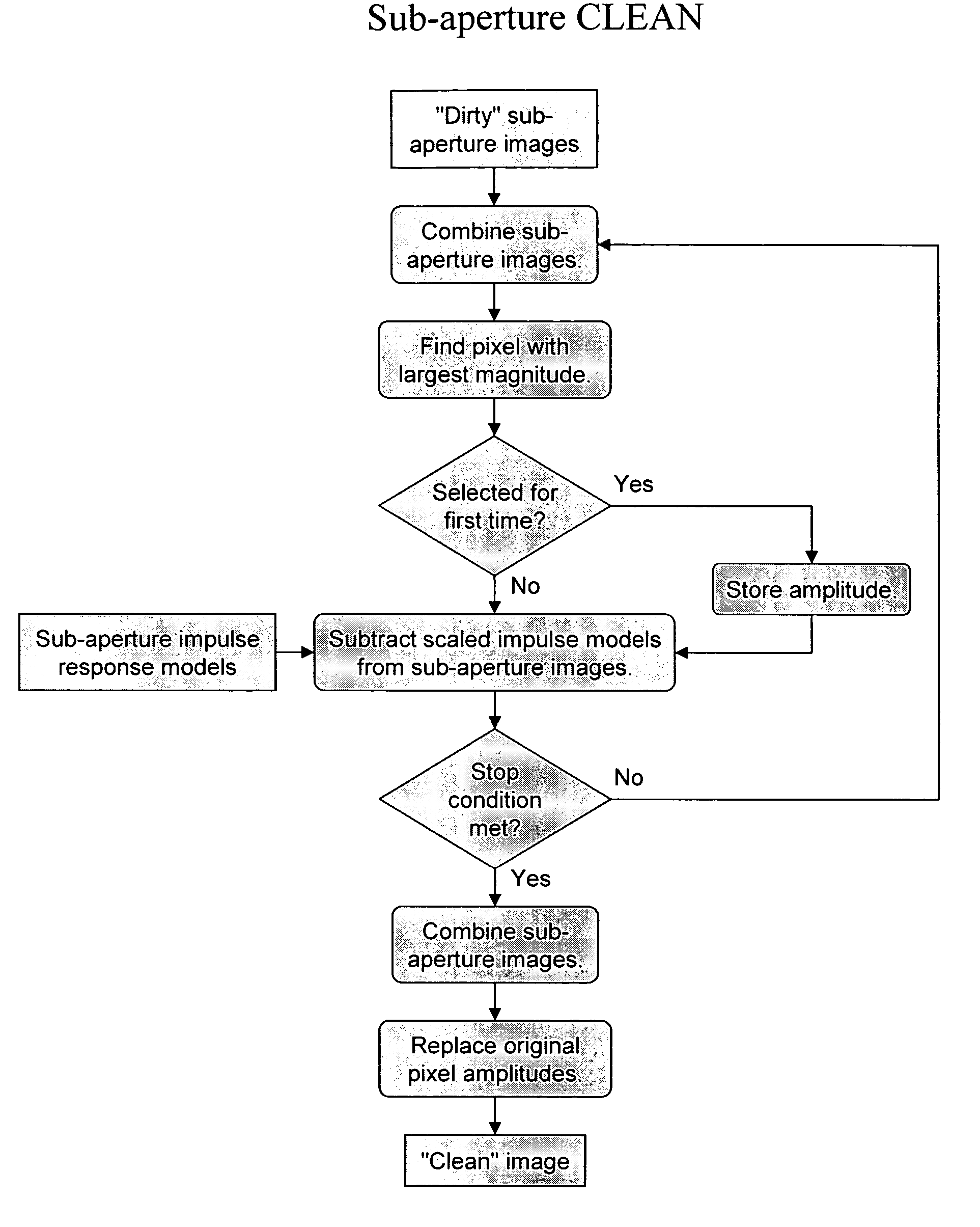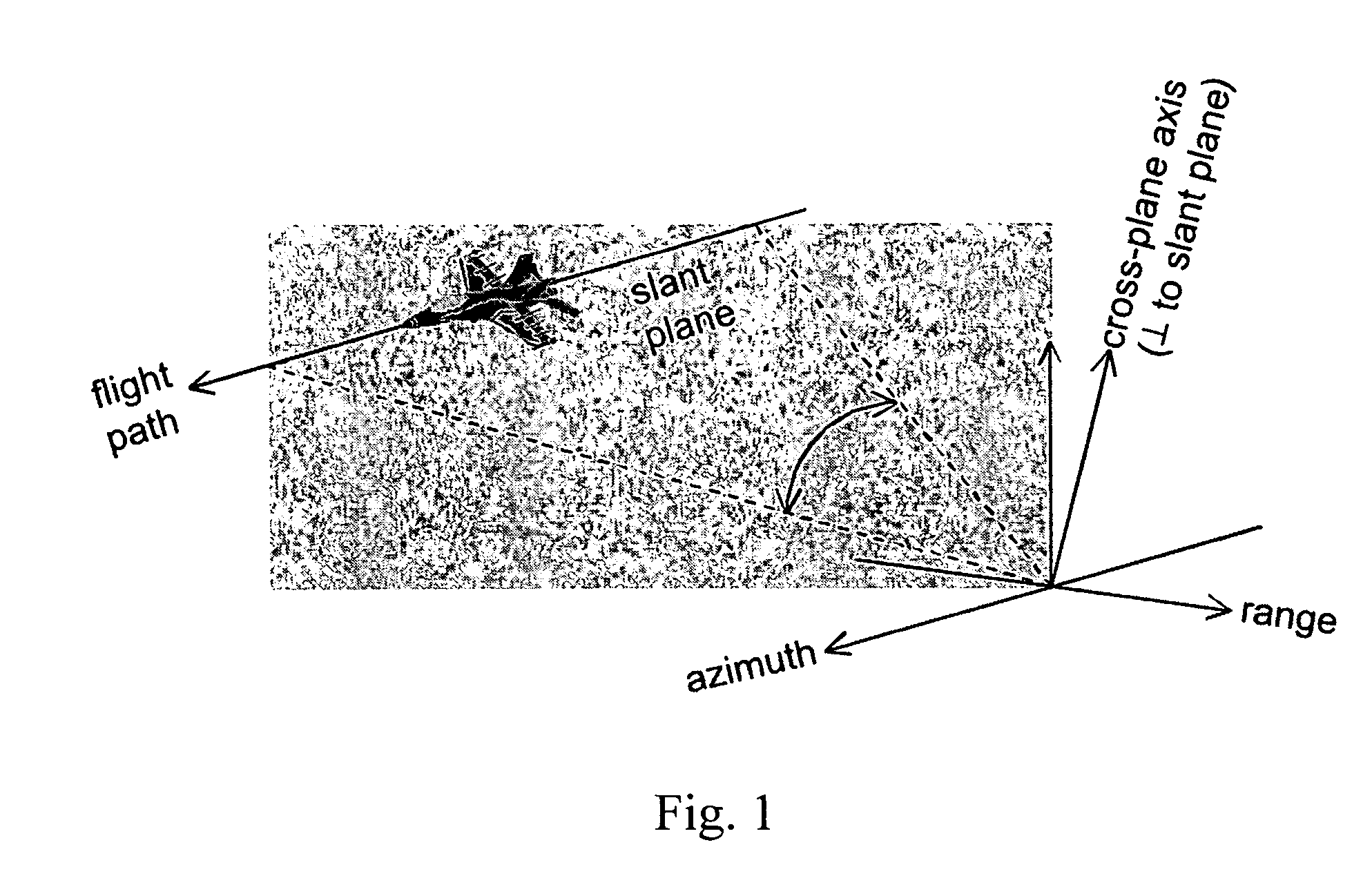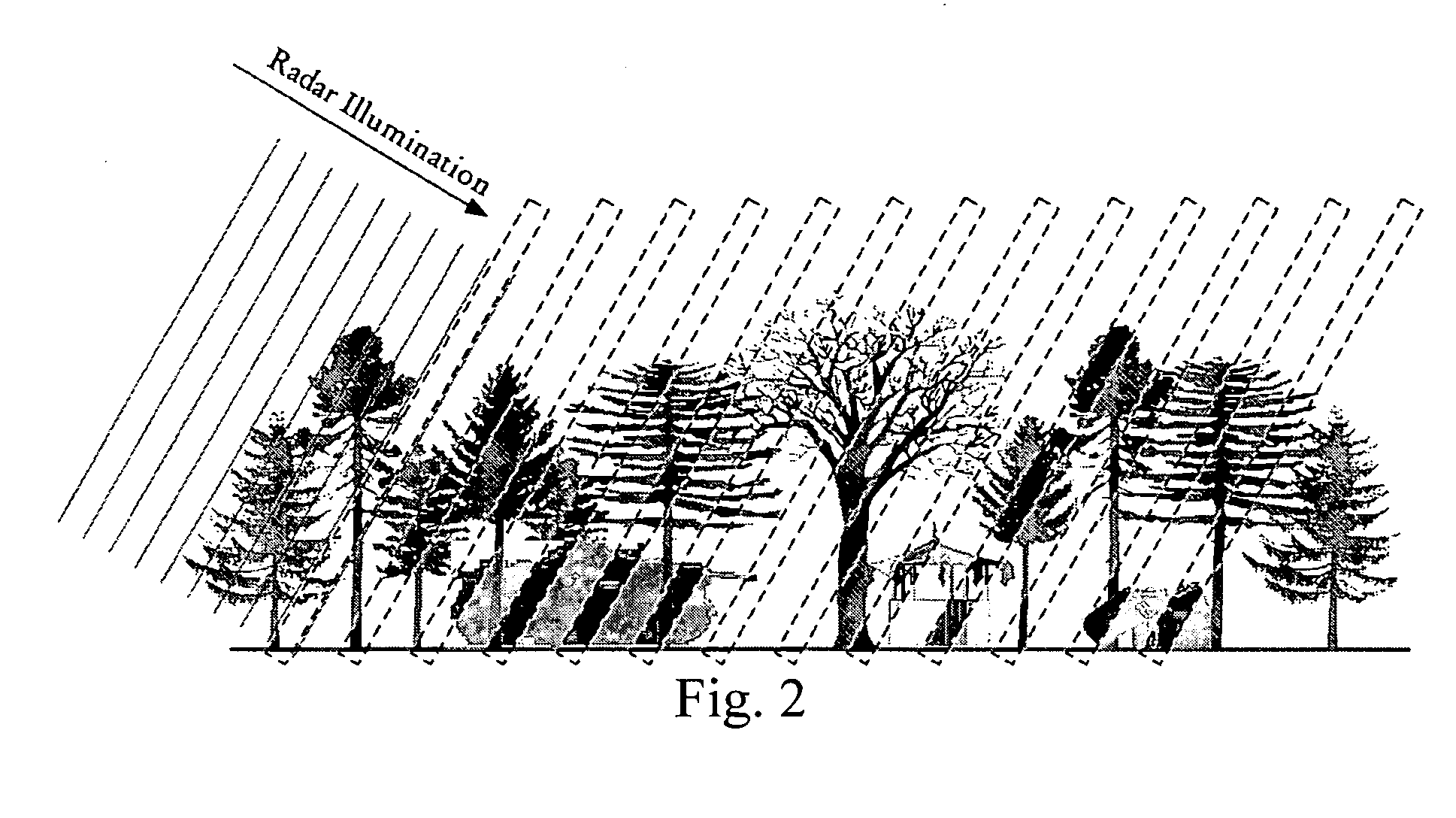Sub-aperture sidelobe and alias mitigation techniques
a technology of sidelobes and synthetic apertures, applied in the field of synthetic aperture image mitigating sidelobes and aliases, can solve the problems of difficult to obtain sufficient 3-d sampling, limited utility of 2-d form of sar in detecting and identifying objects, and limited utility of 2-d form of sar
- Summary
- Abstract
- Description
- Claims
- Application Information
AI Technical Summary
Problems solved by technology
Method used
Image
Examples
Embodiment Construction
[0007]Essex Corporation has developed techniques to mitigate sidelobes and aliases, and demonstrated levels of suppression in excess of 20 dB. These new techniques disclosed in this document include 1) a version of the CLEAN algorithm developed in radio astronomy, modified to work on sub-aperture images; 2) weighting functions based on the phase and amplitude statistics of the sub-aperture image pixels to select points in the CLEAN algorithm; and 3) weighting functions based on the phase and amplitude statistics of the sub-aperture image pixels to mitigate sidelobes and aliases, in conjunction with CLEAN or separately. This discussion will generally assume two dimensions and use the terms “images” and “pixels”, but the techniques discussed are applicable to images with more than two dimensions.
[0008]Other researchers have investigated using CLEAN for sidelobe mitigation, both in conventional 2-D SAR and in 3-D SAR. In general, the CLEAN algorithm works by selecting a bright point an...
PUM
 Login to View More
Login to View More Abstract
Description
Claims
Application Information
 Login to View More
Login to View More - R&D
- Intellectual Property
- Life Sciences
- Materials
- Tech Scout
- Unparalleled Data Quality
- Higher Quality Content
- 60% Fewer Hallucinations
Browse by: Latest US Patents, China's latest patents, Technical Efficacy Thesaurus, Application Domain, Technology Topic, Popular Technical Reports.
© 2025 PatSnap. All rights reserved.Legal|Privacy policy|Modern Slavery Act Transparency Statement|Sitemap|About US| Contact US: help@patsnap.com



